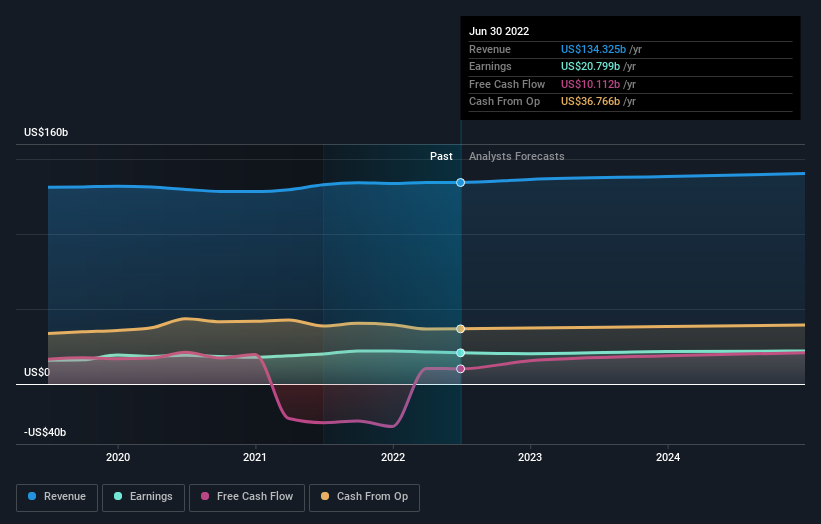The three-year underlying earnings growth at Verizon Communications (NYSE:VZ) is promising, but the shareholders are still in the red over that time
It can certainly be frustrating when a stock does not perform as hoped. But no-one can make money on every call, especially in a declining market. While the Verizon Communications Inc. (NYSE:VZ) share price is down 41% in the last three years, the total return to shareholders (which includes dividends) was -32%. And that total return actually beats the market decline of 39%. And over the last year the share price fell 31%, so we doubt many shareholders are delighted. Furthermore, it’s down 29% in about a quarter. That’s not much fun for holders. But this could be related to the weak market, which is down 18% in the same period.
With the stock having lost 9.4% in the past week, it’s worth taking a look at business performance and seeing if there’s any red flags.
Our analysis indicates that VZ is potentially undervalued!
In his essay The Superinvestors of Graham-and-Doddsville Warren Buffett described how share prices do not always rationally reflect the value of a business. One way to examine how market sentiment has changed over time is to look at the interaction between a company’s share price and its earnings per share (EPS).
Although the share price is down over three years, Verizon Communications actually managed to grow EPS by 9.0% per year in that time. Given the share price reaction, one might suspect that EPS is not a good guide to the business performance during the period (perhaps due to a one-off loss or gain). Alternatively, growth expectations may have been unreasonable in the past.
Since the change in EPS doesn’t seem to correlate with the change in share price, it’s worth taking a look at other metrics.
We note that the dividend seems healthy enough, so that probably doesn’t explain the share price drop. Verizon Communications has maintained its top line over three years, so we doubt that has shareholders worried. A closer look at revenue and profit trends might yield insights.
The image below shows how earnings and revenue have tracked over time (if you click on the image you can see greater detail).

We consider it positive that insiders have made significant purchases in the last year. Having said that, most people consider earnings and revenue growth trends to be a more meaningful guide to the business. This free report showing analyst forecasts should help you form a view on Verizon Communications
What About Dividends?
When looking at investment returns, it is important to consider the difference between total shareholder return (TSR) and share price return. The TSR is a return calculation that accounts for the value of cash dividends (assuming that any dividend received was reinvested) and the calculated value of any discounted capital raisings and spin-offs. Arguably, the TSR gives a more comprehensive picture of the return generated by a stock. In the case of Verizon Communications, it has a TSR of -32% for the last 3 years. That exceeds its share price return that we previously mentioned. This is largely a result of its dividend payments!
A Different Perspective
While it’s certainly disappointing to see that Verizon Communications shares lost 27% throughout the year, that wasn’t as bad as the market loss of 44%. Unfortunately, last year’s performance may indicate unresolved challenges, given that it’s worse than the annualised loss of 1.5% over the last half decade. Whilst Baron Rothschild does tell the investor “buy when there’s blood in the streets, even if the blood is your own”, buyers would need to examine the data carefully to be comfortable that the business itself is sound. I find it very interesting to look at share price over the long term as a proxy for business performance. But to truly gain insight, we need to consider other information, too. For instance, we’ve identified 2 warning signs for Verizon Communications that you should be aware of.
